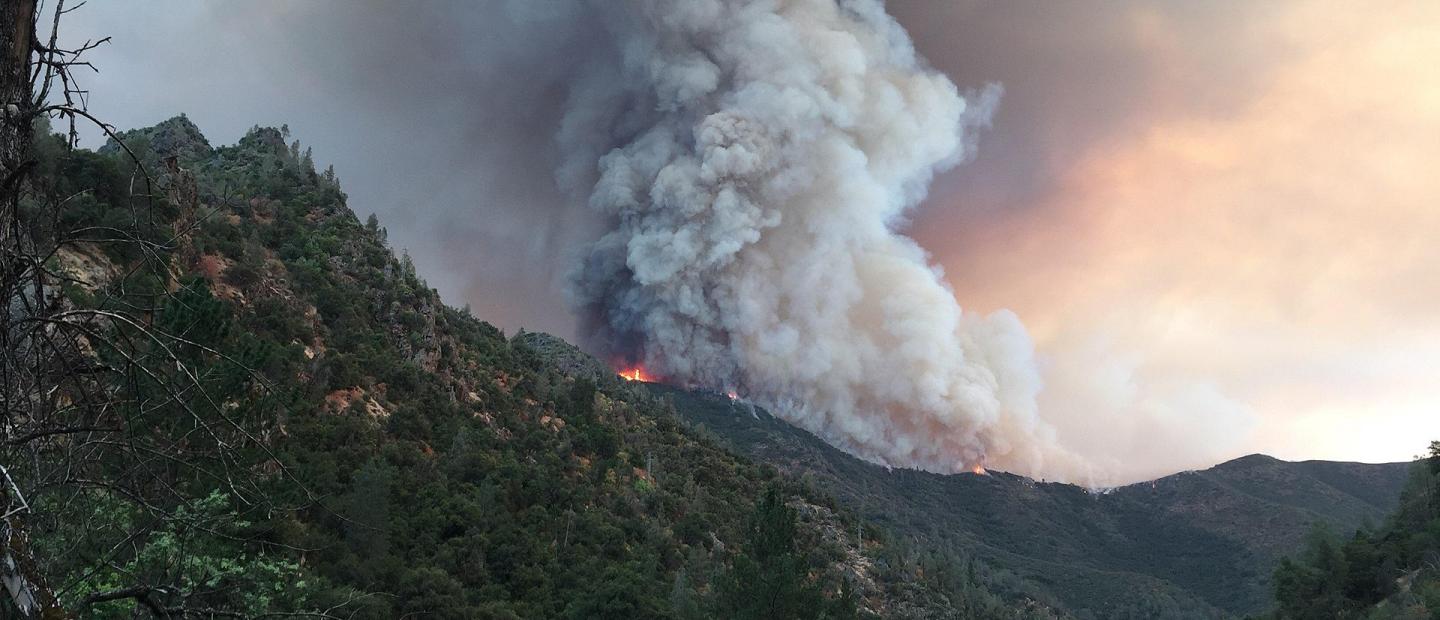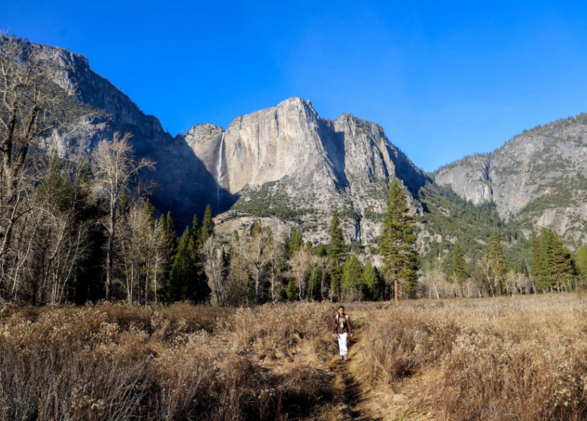Fighting Fire with Fire Science
"WWhen we moved into our house in 2018, about two weeks after my son was born, the Ferguson Fire started, which burned right up to the edge of the NatureBridge NESC [National Environmental Science Center] campus. It also burned across the ridge to my house and I was watching fire plumes as the trees torched up. My wife and son had to go back home just to get away from it. We lost power for weeks. I mean, living in the Sierra, it's not a matter of like, ‘will a fire impact us this year?’ It's when and how close and to what degree. It's part of life here.”
NatureBridge Interim Education Director John Patton’s experience with fire may be more intimate than many of ours, but it is increasingly less rare. Fires have burned more than five million acres in California alone since 2020; an area nearly the size of New Jersey. Fifteen of the 20 largest fires in California history have occurred in the last 20 years. The impacts of climate change are being felt exponentially and each year, it becomes more difficult to manage the expansion, ubiquity and threat of fire.
That’s why NatureBridge created a fire ecology curriculum; to educate, inform and transform student perception of fire so that future generations of scientists and stewards would contribute to this vital field. John Patton has been at the forefront of this fire ecology program and has witnessed firsthand the impact of fires on students.

“A group that we were running the fire ecology project with in its early days came from Northern California, near Redding, where the Carr Fire had recently just burned through,” says John.
“Their general mentality because they were so personally impacted by wildfires was that fires are bad, fires need to be put out and that when you see a fire, it's just a horrible thing that’s happening, which was completely understandable. This is a very real and very emotional topic for folks.”
Part of the fire ecology curriculum is to balance people’s lived experience with the complex nature of fire. Though the increase in fires due to climate change-related factors is alarming, fires in and of themselves are part of a healthy forest ecosystem.
The program begins by teaching about the two Fire Triangles — the Combustion Triangle (heat, fuel, oxygen) and the Fire Behavior Triangle (topography, fuel load, weather).
Combustion and Fire Behavior are often explained with triangles to demonstrate how each piece is directly connected to the other two, and that if any part of the triangle is increased or decreased, there is a dramatic effect. For example, in the Combustion Triangle if the fuel is removed the fire will go out; in the Behavior triangle the weather can cause a fire to blow up, or give the fire managers the opportunity to influence its course.
Once students understand the basics through the two triangles, they participate in hands-on scientific inquiry, investigating real forests within Yosemite National Park. In the field, students gather data to be used back at the lab to show the difference between a healthy ecosystem and one at risk of a damaging wildfire. They learn about fuel load, ladder fuel, canopy height and other variables, measuring them in actual forests to determine their fire risk.
“Based on the information that they collect, we're able to analyze how a fire would potentially move through an area if it were to ignite,” says John.
Students create model forests, complete with trees, detritus and groundcover, utilizing “burn boards” to safely test their hypotheses. The burn boards are standardized pieces of inflammable material with holes drilled into it for placing matches, sticks and other items used to represent a forest. Based on what the students surveyed in the actual forest, they place cotton or paper on the “forest floor” to represent dead leaves and branches.
“Maybe they build one model that represents an area with a natural fire cycle that has had lots of fires burn through naturally, like from lightning, over the course of its existence, and then they build another model that has been fire-suppressed, where fires have not been allowed to burn naturally through that area,” says John.
And then?
“Then they actually light them on fire, yep.”
The students then record their findings: how much of the forest burned, how quickly, etc. and compare the models.
“It's this ‘aha’ moment,” says John. “They realize different forests with different management practices can burn in different ways, which has huge impacts on ecosystems and on human communities.”
“Putting terms like ‘good’ and ‘bad’ on fire is a human construct. We have to remember that these forests are also a human construct.”John Patton
The management practices are a crucial part of the fire story. Since 1944, Smokey the Bear — the U.S Forest Service’s friendly mascot to prevent forest fires — espoused the philosophy of the agency over the years: forest fires are bad.
“Fire is just fire,” says former Chief of Fire and Aviation Management at Yosemite National Park Kelly Martin. “It’s been on the landscape way longer than we have, doing incredible and essential work in terms of nutrient recycling and reducing stem density of trees. Fire is a regenerative process.”
“Putting terms like ‘good’ and ‘bad’ on fire is a human construct,” says John. “We have to remember that these forests are also a human construct.”
The philosophy of the U.S. Forest Service for decades was to immediately suppress any forest fires, not distinguishing between fires that irrevocably destroyed ecosystems versus those that were necessary for an ecosystem to thrive. This strategy created many of the forests that are now at high risk for forest fires because they were not allowed to go through their natural fire cycle.
“The fires burning in areas that have been heavily affected by suppression management strategies are what we call catastrophic fires,” says John. “You're getting high intensity burns where you don't have any standing trees anymore; all the trees that are standing are completely scorched and the soil and the seed bank is burned down to the mineral soil. An ecosystem cannot bounce back from wide swaths of forest being heavily burned like that.”
The U.S. Forest Service philosophy (and Smokey) has changed as scientific understanding of fire has deepened and expanded. Prescribed fires — intentional, contained burning of areas with too much fuel load on the ground in order to maintain or restore ecosystem health — have become a valuable tool. Letting natural fires burn in fire-dependent ecosystems when there is no danger to human communities is increasingly common.

Even with this new understanding and updated practices, it could still be years before we see a decline in catastrophic fires.
“It’s going to get worse and maybe a lot worse, maybe by tens of thousands of acres [before it gets better]. It feels like we have to get through this equilibrium. There’s been so much buildup and lack of fire in these fire-dependent ecosystems that we’re in this place where there is going to be a lot of fire,” says Kelly Martin. “We’re going to have to do the best we can to change our mindset to one of thinking about how we live with fire.”
For the students who learn fire ecology through NatureBridge, reframing their mindset to think about living with fire can be one of the most profound impacts of the program.
“Going back to the one school that came from Redding...the fire ecology curriculum changed their relationship with fire. It's something that we've actually seen a lot — through conversation and exploration and looking at the science behind it, they were able to realize fires aren't inherently bad,” says John.
“It's almost like that saying, ‘fighting fire with fire;’ these students studying and even using fire may be part of the solution one day so we don't have these catastrophic fires.”

